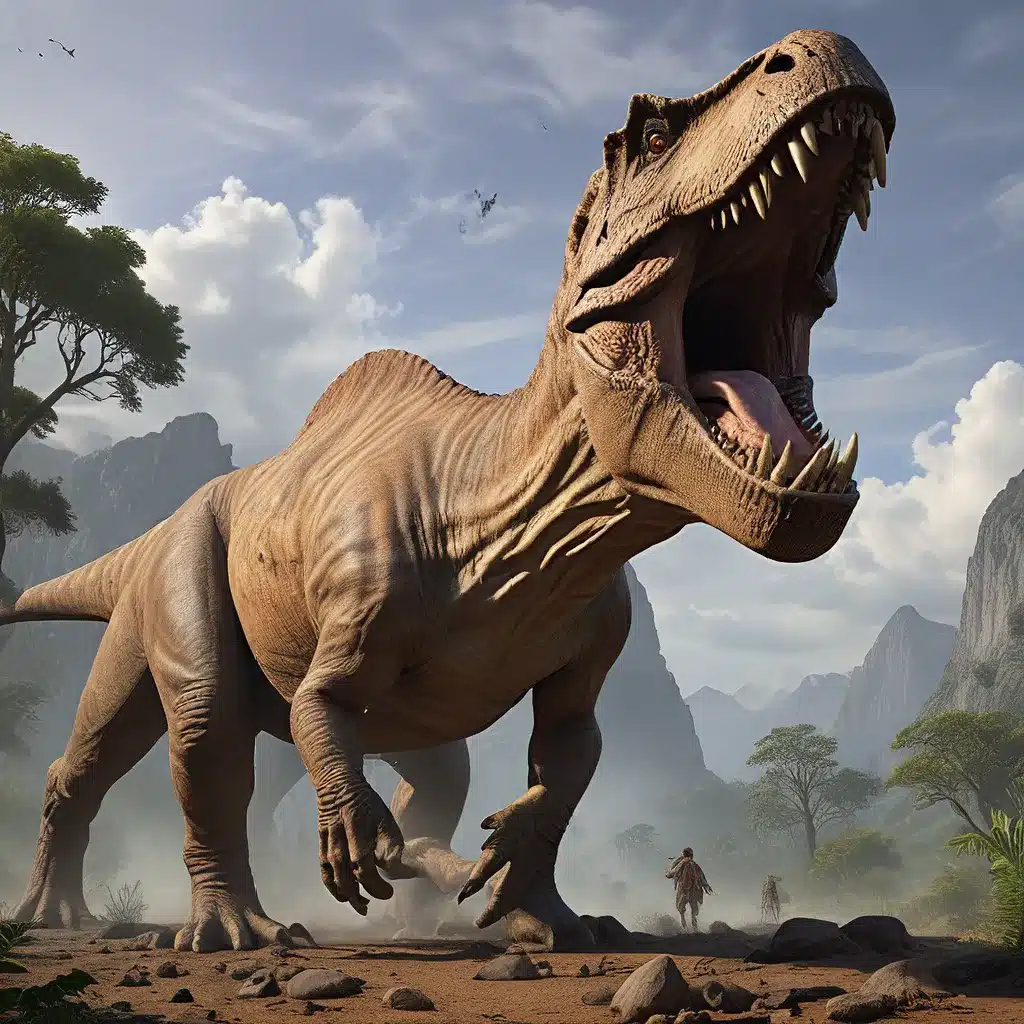
Unraveling the Mysteries of Dinosaur Adaptations
The dinosaur realm has captivated the human imagination for centuries, with its massive, awe-inspiring creatures that once roamed the Earth. As archaeologists and paleontologists continue to uncover new fossils and decipher the clues left behind, our understanding of these prehistoric giants has evolved dramatically. In this comprehensive exploration, we delve into the intricate evolutionary strategies that enabled dinosaurs to thrive and dominate their environments for millions of years.
One of the most remarkable aspects of dinosaur evolution is the sheer diversity of adaptations that allowed these creatures to exploit a wide range of ecological niches. From the towering sauropods with their long necks and massive bodies to the agile theropods with their razor-sharp teeth and deadly claws, each species was uniquely equipped to fulfill a specific role within their respective ecosystems.
Ongoing research has shed light on the complex mechanisms behind these adaptations, revealing the intricate interplay between physiology, behavior, and environmental pressures. For instance, the development of the feathered dinosaurs, such as the iconic Velociraptor, showcases the remarkable evolutionary transition from terrestrial to aerial locomotion, a precursor to the rise of modern birds.
Unraveling the Complexities of Dinosaur Physiology
At the core of dinosaur evolution lies the intricate physiology that allowed these magnificent creatures to thrive in their respective environments. Paleontologists have dedicated countless hours to studying the skeletal structures, musculature, and organ systems of various dinosaur species, uncovering a wealth of insights into their feeding strategies, locomotion, and environmental adaptations.
One particularly fascinating aspect of dinosaur physiology is the thermoregulatory mechanisms employed by these prehistoric giants. While the ongoing debate surrounding the warm-blooded or cold-blooded nature of dinosaurs continues, researchers have identified intriguing evidence of advanced thermoregulatory systems, such as the presence of insulating structures and countercurrent heat exchange mechanisms.
Recent studies have also shed light on the respiratory systems of dinosaurs, suggesting that some species may have possessed sophisticated lung structures that enabled more efficient oxygen exchange, potentially contributing to their impressive sizes and sustained activity levels.
Uncovering the Evolutionary Strategies of Dinosaur Dominance
Beyond the fascinating physiological adaptations, the behavioral and ecological strategies employed by dinosaurs played a crucial role in their evolutionary success. Paleontologists have meticulously analyzed fossilized footprints, nesting sites, and social structures to unravel the complex web of interspecies interactions and resource utilization that allowed these prehistoric giants to thrive.
One striking example of this is the herding behavior observed in certain dinosaur species, where individuals would form large, cohesive groups to improve their chances of survival and resource acquisition. This social adaptation not only provided enhanced protection from predators but also facilitated the sharing of information and the coordination of hunting or migratory patterns.
Furthermore, the dietary adaptations of dinosaurs, from the specialized herbivores to the apex predators, reveal the intricate food webs and resource partitioning strategies that enabled these creatures to coexist within their respective ecosystems. Advances in DNA analysis have even shed light on the complex digestive systems of certain dinosaur species, providing insights into their nutritional requirements and metabolic processes**.
Revealing the Dynamism of Dinosaur Extinction
The ultimate fate of the dinosaurs, marked by their extinction, has long been a subject of intense scientific inquiry and public fascination. While the asteroid impact theory proposed by Luis Alvarez and his team remains a widely accepted explanation, recent research has uncovered a more nuanced and dynamic picture of the events that led to the demise of these prehistoric giants.
Emerging evidence suggests that the extinction of dinosaurs was a multifaceted process, influenced by a combination of climatic changes, environmental disruptions, and complex ecological shifts. The role of volcanic activity, sea-level fluctuations, and habitat destruction in the Cretaceous-Paleogene (K-T) mass extinction is being increasingly recognized by the scientific community.
Moreover, the gradual decline of certain dinosaur lineages prior to the final catastrophic event has led researchers to re-evaluate the pace and mechanisms of their extinction. This newfound understanding challenges the traditional sudden and abrupt narrative, highlighting the dynamic and multifaceted nature of the processes that ultimately led to the end of the dinosaur reign.
Embracing the Dynamism of Dinosaur Evolution
As we continue to unravel the mysteries of the prehistoric world, the study of dinosaurs remains a vibrant and ever-evolving field of scientific inquiry. From the intricate physiological adaptations to the complex behavioral and ecological strategies, the story of these ancient giants is one of remarkable resilience, innovation, and dynamism.
By delving deeper into the fossil record, genetic analyses, and interdisciplinary research, we are gaining a more comprehensive understanding of the evolutionary journey of dinosaurs. This knowledge not only satisfies our innate curiosity about the past but also informs our understanding of the present and future of life on our planet.
As we stand in awe of the towering sauropods, the agile theropods, and the feathered wonders that once roamed the Earth, we are reminded of the enduring fascination and scientific significance of the dinosaur realm. The Jurassic Insights we uncover through our continued exploration of these prehistoric giants will undoubtedly continue to shape our understanding of the evolutionary processes that have shaped the world we live in today.


